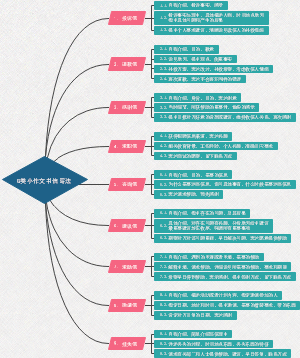导图社区 从句
- 45
- 1
- 1
- 举报
从句
英语从句整理,如主语从句 使用it形式主语:It is obviousThat the rabbit ate a carrot.不确定的信息:whether、where、when、how、who、that
编辑于2023-08-11 00:09:51 浙江省- 从句
- 相似推荐
- 大纲
从句
名词从句
主语从句 使用it形式主语:It is obviousThat the rabbit ate a carrot.不确定的信息
whether
where
when
how
who
that
宾语从句
确定的信息做宾语从句:I saw that the rabbit ate a carrot.
不确定的信息做宾语从句:I saw who ate the carrot.
1.除了某些介词参与的情况,从句的引导词基本都在从句的开头
2.不要再看到whether/where/when/who就以为看到了包含疑问代词/疑问副词的问句,错误的加上助动词
有时可省略that
某些词后的宾语从句的否定 eg:I think (that)the rabbit is smart.→I don′t think (that)the rabbit is smart. 否定往往加在谓语动词前,而非从句中
主句时态等于宾语从句时态 eg:I don′t think that you are right. 如果从句表示客观事实,则用一般现在时 eg:I knew that the sun rises in the east.
be➕adj➕that:形容词通常都是表达某种看法/判断,That引导的从句相当于看法/判断
谓语动词出现suggest/demand/order/insist……使用虚拟语气eg:It′s suggest that you should eat a carrot
表语从句
主语补语=表语→从句 表语从句往往就是把之前的主语从句一到系动词之后去而已
系动词:Be动词,感官动词eg:It seems that the rabbit is hungry.
宾语补语从句
eg:You can call me papa rabbit.→You can call me what you like. papa rabbit这个充当宾语不育的专有名词 用从句替换,得到一个宾语补语从句
同位语从句
常在句中修饰抽象名词
eg:The fact that the rabbit ate the carrot did not surprise me.
eg:The question whether the rabbit will eat the carrot is on all over mind.
eg:I have no idea who ate the carrot.
be➕adj➕从句 eg:I'm sure that there's a carrot on the table.
副词从句
状语从句
地点状语从句
where➕强调形式(wherevere/everywhere/anywhere
时间状语从句
在某一时间点之前 before
在某一时间点之中(当时)when/while/as
when表时间点,有突然之意 eg:The rabbit was eating a carrot at home when the wolf stopped by.
while表时间段 eg:The rabbit was eating a carrot well, I was making a video.
as同时 eg:I ate a carrot as I made the video.
在某一时间点之后after
The rabbit is a carrot after the wolf stopped by.
从之前某一时间点开始算since,一般用完成态
The rabbit has not stopped sharing carrots since the wolf stopped by.
直到之后某一时间点until
The rabbit waited until the wolf stopped by.
一……就 as soon as
eg:The rabbit will eat a carrot as soon as the wolf leaves.
下次The next time.
The rabbit will sharing the biggest carrot the next time.
条件状语从句
主将从现 可用if/unless/provided/as long as/In case.
将来:非常确定会发生的事
不确定:一般状态
虚拟语气:从去比主句落后一个时间段 eg:If I saw a carrot, I would eat it.
方式状语从句 You spend money as if you were a millionaire→If you were a millionaire,You would spend a lot of money.第一句是已经发生的情况,第二句则是做一个假设
比较状语从句
than
the more……the more
让步状语从句
阐述相反/相对
假设:Even if I see a carrot, I will not eat it.
事实:Although I see a carrot, I will not eat it.
no matter/regardless of➕疑问句 不管如何 No matter what happens, I will not eat the carrot.
原因状语从句
Because so不能连用,Because引导从句构成了一个复杂句,So引导从句构成了一个复合句
since eg: Since you are hungry, you can eat the carrot
as eg:As you were not here, we eat the carrot without you.
因果/语气:Because>since>as
特别注意:For构成的 不是原因状语从句是复合句
目的状语从句
目的(从句)←事件(主句) In order that I could finish the video in time,I pulled an all night.
So that不可以放在句首,目的状语从句中一般使用情态动词
结果状语从句
The temperature was low so that the lake froze.(So that表结果)
so和so that的区别
So连接了两个并列句,构成了复合句
So that引导的是副词从句,作用是解释说明主句的情况
可用so……that……/such……that……such后接名词,而不是形容词
形容词从句
先行词➕关系词➕从句
概要
关系词
关系代词
陈述句→陈述句语序,含关系代词→从句
that,which
That:先行词唯一,若出现much/little/none/all/few/every……使用
which:先行词多选一
who
先行词为人
whom
先行词为人的宾语,可用who代替
whose
表“谁的”,做定语
关系副词
关系副词=介词➕which
限定性形容词从句VS非限定性形容词从句
限定性形容词从句:
非限定性形容词从句:
语序:Because引导的从句放在主句后或前 都可以









